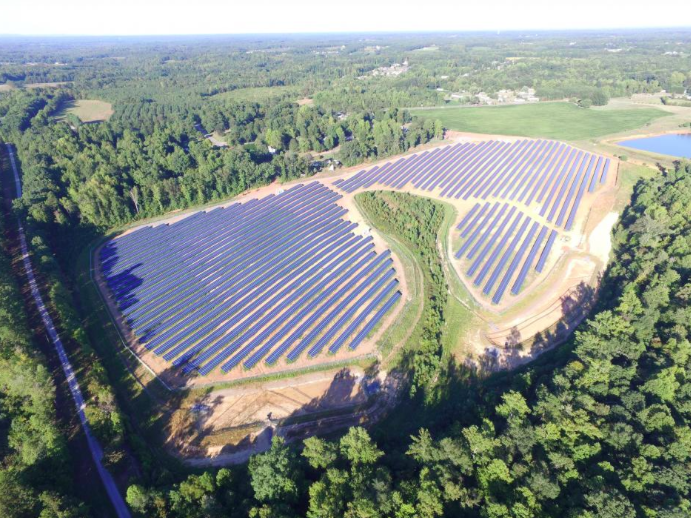
The Apple One 4.9 MW solar project, built by Cypress Creek Renewables, is pictured in Newton, North Carolina, United States in this undated handout photo obtained by Reuters March 28, 2017. Cypress Creek Renewables/Handout via REUTERS
reuters.com - by Nichola Groom - October 12, 2017
President Donald Trump’s administration has vowed to revive the coal industry, challenged climate-change science and blasted renewable energy as expensive and dependent on government subsidies.
And yet the solar power industry is booming across Trump country, fueled by falling development costs and those same subsidies, which many Republicans in Congress continue to support.
Data provided to Reuters by GTM Research, a clean energy market information firm, shows that eight of the 10 fastest-growing U.S. solar markets between the second quarters of 2016 and 2017 were Western, Midwestern or Southern states that voted for Trump, with Alabama and Mississippi topping the list. And solar firms are ramping up investments in these regions, signaling their faith that key renewable energy incentives will remain in place for years to come.
Recent Comments